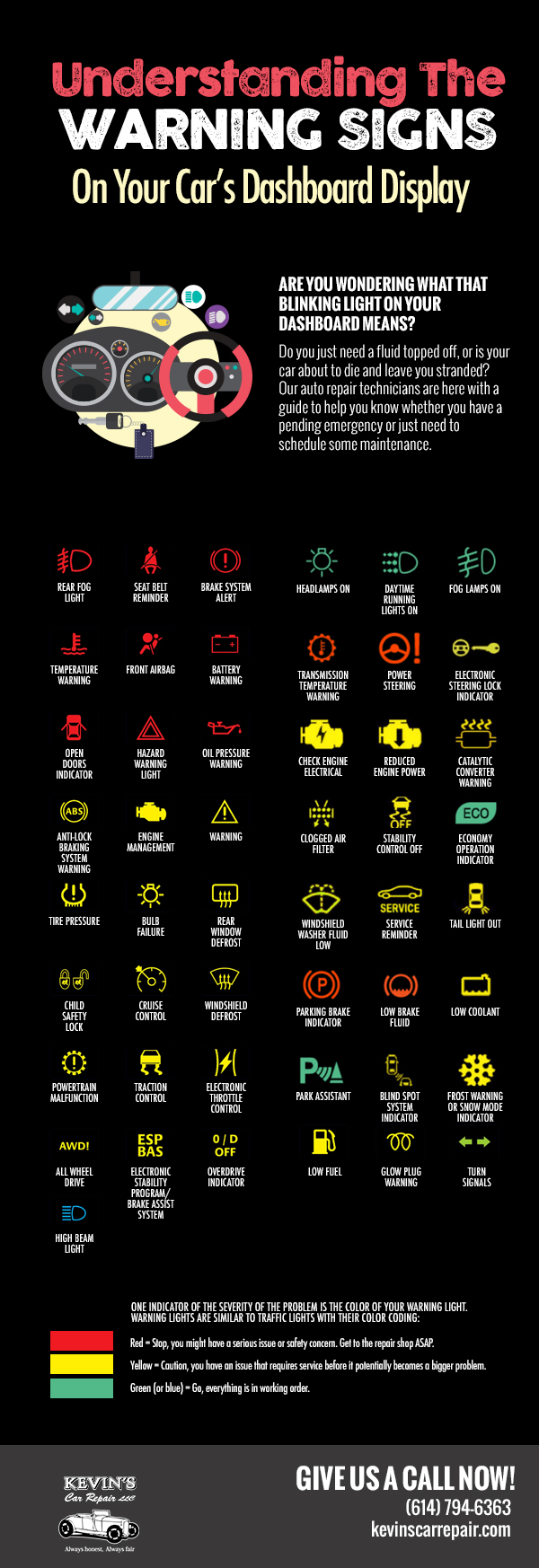Looking For Clearness On The Warning Lights Showed On Your Vehicle'S Dashboard? Figure Out Exactly How They Connect To Your Vehicle'S Health And Safety
Looking For Clearness On The Warning Lights Showed On Your Vehicle'S Dashboard? Figure Out Exactly How They Connect To Your Vehicle'S Health And Safety
Blog Article
Author-Hartley Gilbert
When you're behind the wheel, those radiant warning lights on your dashboard can be a little bit difficult. Do you understand what they're attempting to tell you about your car's health? Understanding the value of these lights is crucial for your safety and the durability of your vehicle. So, the next time among those lights turns up, would not you wish to decode its message properly and take the needed steps to resolve it?
Common Warning Lights and Interpretations
Determine common caution lights in your cars and truck and understand their significances to ensure secure driving.
One of the most regular caution lights consist of the check engine light, which signals concerns with the engine or exhausts system. If this light begins, it's critical to have your automobile checked immediately.
The oil pressure warning light suggests reduced oil stress, requiring instant focus to prevent engine damage.
A flashing battery light may suggest a malfunctioning billing system, potentially leaving you stranded if not resolved.
The tire pressure monitoring system (TPMS) light informs you to reduced tire pressure, impacting car stability and gas efficiency. Ignoring this might result in unsafe driving problems.
The ABS light shows a trouble with the anti-lock braking system, jeopardizing your capacity to quit rapidly in emergency situations.
Last but not least, the coolant temperature level alerting light warns of engine getting too hot, which can lead to serious damages otherwise solved swiftly.
Understanding these typical caution lights will assist you resolve problems quickly and keep risk-free driving problems.
Relevance of Prompt Focus
Recognizing the usual warning lights in your vehicle is only the primary step; the value of immediately attending to these cautions can not be highlighted enough to guarantee your security when driving.
When a caution light illuminates on your dashboard, it's your auto's way of communicating a potential issue that needs attention. Disregarding what is it worth can cause much more extreme problems in the future, compromising your security and potentially costing you much more out of commission.
Prompt interest to warning lights can avoid failures and accidents. For example, a blinking check engine light might show a misfire that, if left ignored, might create damage to the catalytic converter. Resolving this quickly can save you from a costly fixing.
In a similar way, a brake system alerting light may indicate reduced brake fluid or used brake pads, vital parts for your safety when driving.
DIY Troubleshooting Tips
If you discover a caution light on your dashboard, there are a couple of do it yourself troubleshooting ideas you can attempt prior to looking for specialist help.
self car wash is to consult your car's manual to understand what the certain warning light shows. Often the problem can be as easy as a loose gas cap causing the check engine light. Tightening up the gas cap might deal with the trouble.
An additional common concern is a low battery, which can cause different warning lights. Checking the battery connections for rust and ensuring they're protected could deal with the problem.
If a caution light lingers, you can attempt resetting it by detaching the cars and truck's battery for a couple of minutes and afterwards reconnecting it. Furthermore, examining your lorry's liquid degrees, such as oil, coolant, and brake fluid, can aid troubleshoot alerting lights connected to these systems.
click this , understanding your cars and truck's warning lights is vital for keeping your vehicle running efficiently and securely. By quickly dealing with auto and marine and knowing what they indicate, you can prevent costly repairs and prospective failures.
Bear in mind to consult your vehicle's handbook for specific information on each warning light and do something about it as necessary to make sure a trouble-free driving experience.
Keep educated, stay safe on the road!
